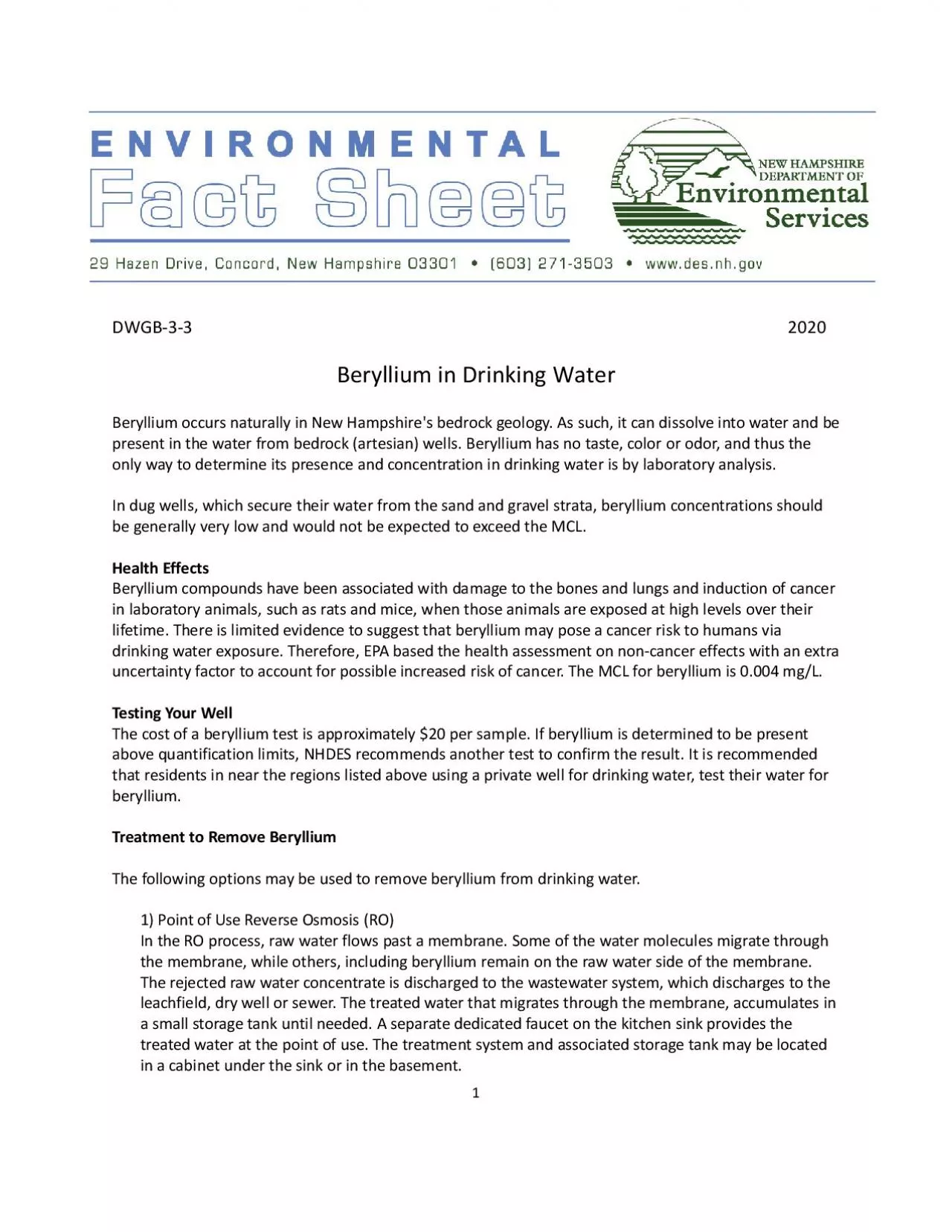

1 DW G B 3 3 2020 B Beryllium occurs naturally in New Hampshire s bedrock geology As such it can dissolve into water and be present in the water from bedrock artesian wells B eryllium ID: 937617
Download Pdf The PPT/PDF document "eryllium in Drinking Water" is the property of its rightful owner. Permission is granted to download and print the materials on this web site for personal, non-commercial use only, and to display it on your personal computer provided you do not modify the materials and that you retain all copyright notices contained in the materials. By downloading content from our website, you accept the terms of this agreement.
1 DW G B - 3 - 3 2020 B eryllium in Drinking Water Beryllium occurs naturally in New Hampshire 's bedrock geology. As such, it can dissolve into water and be present in the water from bedrock (artesian) wells. B eryllium has no taste, color or odor, a nd thus the only way to determine its presence and concentration in drinking water is by laboratory analysis. In dug wells, which secure their water from the sand and gravel strata , beryllium concentrations should be generally very low and would not be ex pected to exceed the MCL. Health E ffects Beryllium compounds have been associated with damage to the bones and lungs and induction of cancer in laboratory animals, such as rats and mice, when those animals are exposed at hi gh levels over their lifetime. T here is limited evidence to suggest that beryllium may pose a cancer risk to humans via drinking water exposure. Therefore, EPA based the health assessment on non - cancer effects with an extra uncertainty factor to account for possible increased risk of can cer. The MCL for beryllium is 0.004 mg/L. Testing Your Well The cost of a beryllium test is approximately $ 20 per sample . If beryllium is determined to be present above quantification limits, NH DES recommends another test to confirm the result . It is rec ommended that r esidents in near the regions listed above using a private well for drinking water,
test their water for beryllium. Treatment to Remove B eryllium The following options may be used to remove beryllium from drinking water. 1) Point of Use Re verse Osmosis (RO) In the RO process , ra w water flows past a membrane. Some of the water molecules migrate through the membrane, while others, including beryllium remain on the r aw water side of the membrane. The rejected raw water concentrate is discharge d to the wastewater system , which discharges to the l eachfield, dry well or sewer. T he t reated water that migrates through the membrane, accumulates in a small storage tank until needed. A separate dedicated faucet on the kitchen sink provides the tre ated water at the point of use. The treatment system and associated storage tank may be located in a cabinet under the sink or in the basement. 2 2 ) Ion Exchange Ion exchange is the gen eric name for water softening. A typical water s oftener is effective at redu cing the concentration of beryllium in water. Ion exchange is used with whole - house treatment systems. For More Information Please contact the Drinking Water and Groundwater Bureau at (603) 271 - 2513 or dwgbinfo@de s.nh.gov or visit our website at www.des.nh.gov . Note: This fact sheet is accurate as of October 2019 . Statutory or regulatory changes, or the availability of additional information after this date may render this in formation inaccurate or incomplete